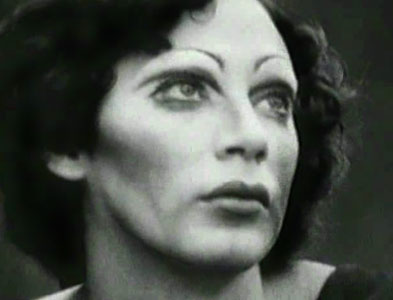rabble is expanding our Parliamentary Bureau and we need your help! Support us on Patreon today!
Holly Woodlawn was a beacon for trans people from the 1960s on.
An actress known for her work with Andy Warhol and her status as a pioneer of trans visibility, Woodlawn died of cancer Sunday December 6. She was 69.
Woodlawn was prominent among Warhol’s circle of so-called superstars — eccentric personalities that appeared in his art and social life. Collectively, they symbolized the beginning of short-lived celebrity and the concept of “15 minutes of fame” so often attributed to Warhol.
Woodlawn herself stood out for her performances in Trash (1970) and Women in Revolt (1972) and director George Cukor reportedly campaigned to have her nominated for Best Supporting Actress. Along with fellow superstars Candy Darling and Jackie Curtis, she gained notability through her presence in underground cinema and, for many people, was one of the first and few trans women visible in public life.
In the days of Woodlawn’s young adulthood, “cross-dressing” in public was illegal. Though she would laugh and tell James St. James that she “went home early,” she was also present at the first night of the Stonewall riots of June 1969, which sparked the modern LGBT rights movement.
Woodlawn was immortalized early in life, a muse not only for Andy Warhol but also Lou Reed. She is mentioned in the opening lines of his 1972 song Walk on the Wild Side:
Holly came from Miami FLA
Hitchhiked her way across the USA
Plucked her eyebrows on the way
Shaved her legs and then he was a she
She says, “Hey, babe,
Take a walk on the wild side”
In the early 1990s, Woodlawn released her autobiography, co-written with Jeffrey Copeland, A Low Life in High Heels. Woodlawn later held roles in independent films such as Billy’s Hollywood Screen Kiss (1998) and Twin Falls Idaho (1999). More recently, she was seen in Amazon Studios’ Transparent, as well as documentaries such as Beautiful Darling (2010).
Woodlawn’s death has inspired significant reflection by trans individuals on her legacy and the impact of her living openly. As Vice’s Paris Lees wrote in The Guardian last week, she “paved the way for today’s trans women to be taken seriously[.]”
Deirdre McCloskey, known for her scholarly work on British economic history, told rabble.ca about the impact the actress had on her own life.
“Woodlawn was the Forbidden Possibility in the early 1970s, when I was 30-something — an occasional private cross-dresser, married with kids, sexually straight. It was before the great liberations of the 1960s had fully blossomed,” she wrote.
McCloskey also alluded to Woodlawn’s personality — her frenetic energy often stood out in interviews as well as on screen.
“Holly’s cheek and cheer was amusing, and in the end inspiring. She was not sad. Good for Holly.”
Andrea James, the writer and director who founded the resource site Trans Road Map, told rabble that Woodlawn’s work helped change images of trans women in media.
“To me, Holly’s life and art was counter-programming to the prim, medicalized representations that had dominated media depictions of trans women at the time she came on the scene,” she said.
Other portraits of trans people of the era were often sensational or exploitative — the pseudo-documentary Let Me Die A Woman (1977), for example, relied on “shock, titillation and barely, barely disguised homophobia run amok,” said the film reviewer Matinga.
James went on to talk about Woodlawn’s influence on the ability of contemporary people of the trans community to live more freely than in the past.
“Holly was an ambassador for what makes our community interesting and vibrant, and her example inspired a generation to embrace their individuality and their freedom to express themselves.”
Stu Rasmussen, the first transgender mayor in the United States (of Silverton, Oregon), told rabble that Woodlawn was “truly a transgender pioneer.”
“[U]ntil I read her obituary I did not realize she was such an inspiration to me and surely other trans people. The Lou Reed tune [reference] struck me at an early age. She will be missed,” he said.
Susan Stryker, a leading figure within transgender studies, told rabble about witnessing media coverage of Holly Woodlawn when she was younger.
“When I was a teenager in the 1970s, I saw Holly Woodlawn on a television talk show. The host asked Holly, ‘What are you? Are you a man? Are you a woman?’ She answered, ‘What difference does it make, darling, as long as you look fabulous?’ That was a revelation, and a very freeing thing to hear.”
Stryker would later meet Woodlawn.
“I had the privilege of having dinner with Holly a number of years ago, and telling her in person how big an impact she’d had on me at a key moment in my life. And she said, ‘Of course I had a big impact on you dear — I’m a superstar!'”
Memorials are being planned in Los Angeles and New York, as is a fund in Woodlawn’s name administered by Los Angeles LGBT Center.
Cory Collins is a writer and visual artist living in St. John’s. He can be contacted via Twitter @coryGcollins or corycollins.ca.
Photo: flickr/flickr: Confetta




